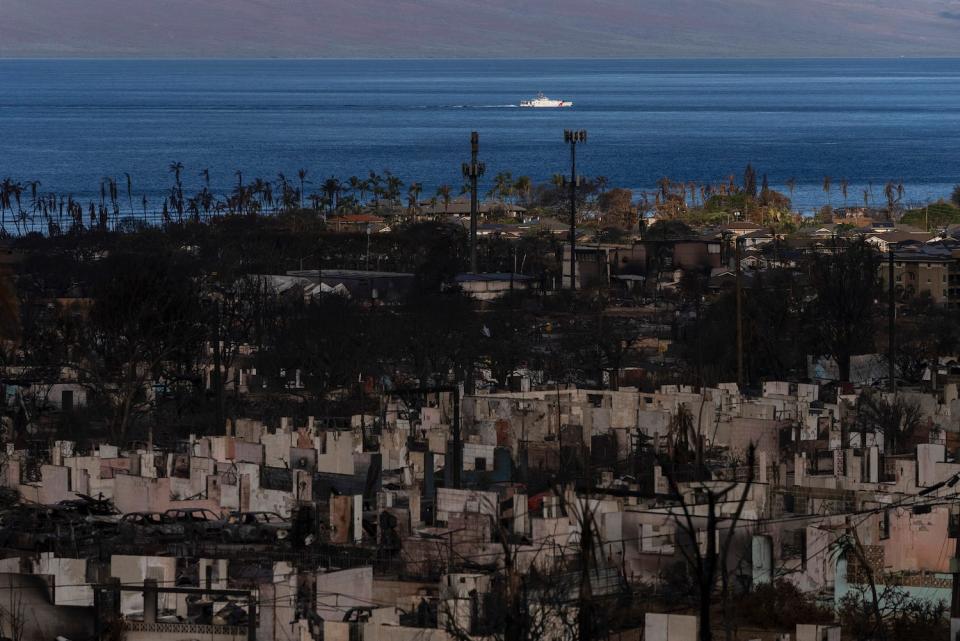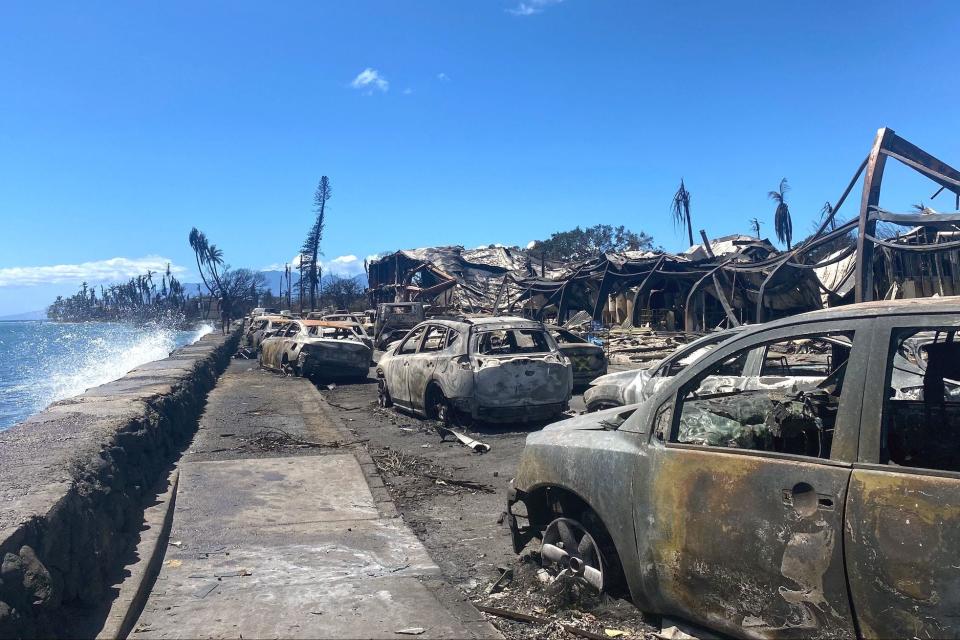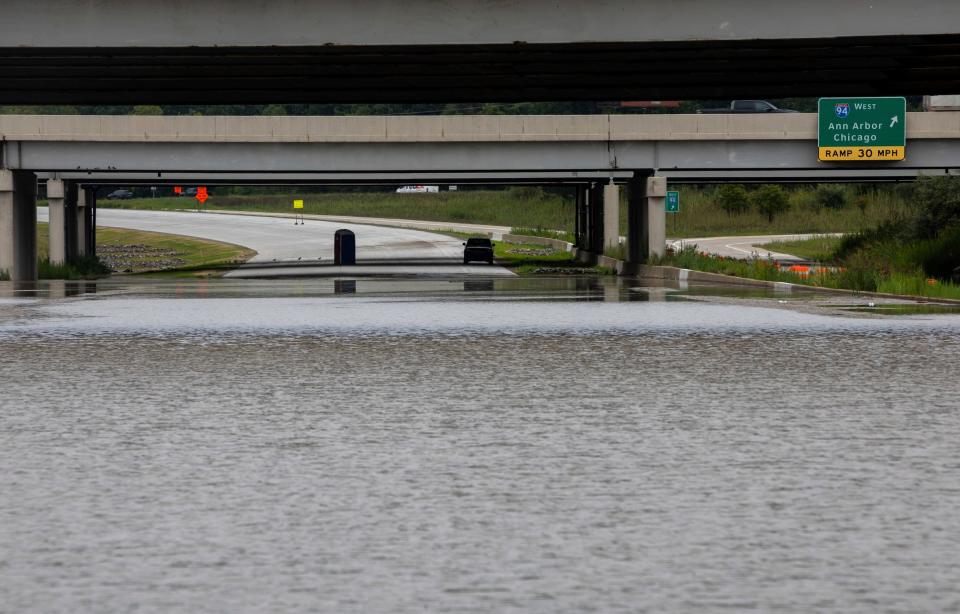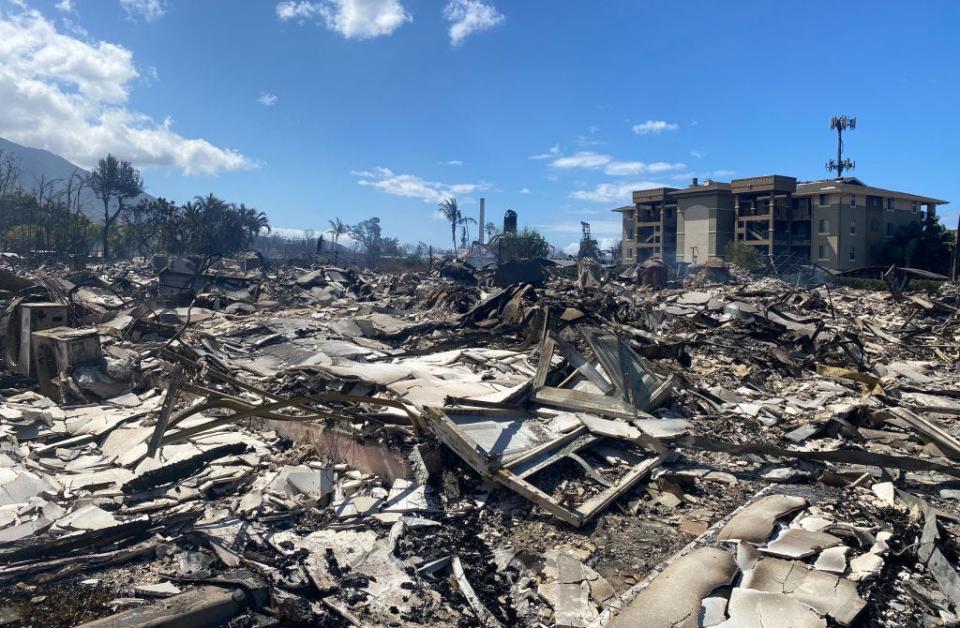Detroit emergency planners see Maui wildfire lesson: Waiting on instructions can be deadly
As the search goes on in Maui for victims of the deadliest wildfire in the U.S. in more than a century, Detroit emergency planners are finding their own lessons from the disaster, in which 114 are known dead, more than 850 remain missing and the historic city of Lahaina was destroyed.
Darin Szilagy, a retired commander with the Detroit Police Department who now serves on the Detroit Emergency Planning Committee, told fellow committee members at their meeting Tuesday that he sees a recurring, deadly theme in disasters such as the Maui wildfires, mass shootings and other emergency events: people failing to be their own best advocates for their safety and survival.
"I think we in government have failed in our training of the public," he said.

"A lot of these deaths, just like in any emergency, were people sitting around waiting for government, or their boss, or someone in authority to tell them (what to do)."
People waited for instructions, failed to barricade doors
He cited the terrorist attacks on New York's World Trade Center on Sept. 11, 2001, where hundreds in the towers perished because they delayed evacuation, waiting for someone in authority to instruct them to leave, or heeding announcements to remain in, or even return to, their offices.
And in the April 16, 2007, mass shooting at Virginia Tech University, in which an undergraduate student killed 32 fellow students and faculty and wounded 17 others before killing himself, some classrooms effectively limited casualties by securely barricading their doors, Szilagy said. But others had multiple opportunities to evacuate but remained, leading to some of the highest fatality numbers.

Similar stories played out in the Maui wildfires. Hector Bermudez left his apartment at Lahaina Shores shortly after 4:30 p.m. Aug. 8 after the smell of smoke woke him up from a nap. He asked his neighbor if he was also leaving.
"He said, 'No, I am waiting for the authorities to see what they are going to do,' " Bermudez recounted. "And I said, 'No, no no, please go. This smoke is going to kill us. You have to go. Please. You gotta get out of here. Don't wait for nobody.' "
His neighbor, who is about 70 and has difficulty walking, refused.
Bermudez doesn't know whether he survived.
Changing climate means more frequent intense storms
As human fossil-fuel burning warms the global climate, severe storms have increased in frequency and intensity — such as Detroit's storms early Thursday that shut down Metro Airport because of flooded roads. With that have come more expensive impacts.
Historic temperature and precipitation data show that the Great Lakes region is warming faster than the rest of the contiguous United States. U.S. annual precipitation increased 4% between 1901 and 2015, but the Great Lakes region saw an almost 10% increase over that interval.

Heavy rains are getting heavier as well. Researchers looked at the top 1% of rainfall events, based on the amount of rain that fell within a 24-hour period, and found that the amount of rain falling in those heavy events has increased 42% in the Midwest since the 1950s. Only the northeastern U.S. had a more pronounced increase, at 55%. Scientific modeling projects rain and snowfall in the Great Lakes region could increase by up to 30% by century's end.
The National Oceanic and Atmospheric Administration's National Centers for Environmental Information compiles data on the economic cost of severe weather events. It found the U.S. has sustained 341 weather and climate disasters since 1980 where overall damages and costs exceeded $1 billion when adjusted to the 2022 Consumer Price Index. The total cost of those floods, severe storms, wildfires, blizzards and other calamities: more than $2.475 trillion.
Preparing for the expected and unexpected
Local emergency managers must ramp up training through their Community Emergency Response Team program, said Dalton Kincaid, deputy director of Detroit Homeland Security and Emergency Management. The program offers citizens, through classroom training and exercises, disaster preparedness and response strategies.
More: Detroit airport drainage system overwhelmed by intense rain
More: Detroit Zoo welcomes 4 new gorillas from Cincinnati, Chicago
"It gives them some urgency in an emergency, an idea of what to do when things aren't right," he said.
A key for emergency planners is to prepare for known hazards in their region, but to also have some idea how to respond to the unexpected, Kincaid said.

"Hawaii didn't expect to have a fire that big — they are prepared for tsunamis and hurricanes, stuff off the ocean, but not that fire," he said. "We want to make sure our emergency preparedness has a template for what we do have here — tornadoes, storms, floods — and that you can take that template and almost place it over any type of emergency situation."
Have a 'go-bag' ready
Szilagy recommends every household have ready a "go-bag" containing essential items they would need should they have to suddenly evacuate amid a natural disaster or other emergency situation. It should contain:
Water for drinking as well as for sanitation and pets.
Toilet paper and hygiene items.
A radio that runs on batteries or crank or solar power.
Flashlights and extra batteries.
At least a three-day supply of nonperishable food items.
A manual can opener.
A first aid kit with tourniquets.
Warm clothing, shoes and boots.
Essential medicines.
Pet food and carrier.
A cellphone and portable charging device.
An emergency contact list.
Copies of home and auto insurance policies.
For more emergency preparedness tips, go to the federal government website www.ready.gov.
"Train yourself, talk to your friends and family, recognize the signs and don’t wait for someone to tell you to go," Szilagy said. "Be your own rescuer."
The Associated Press contributed to this report.
Contact Keith Matheny: kmatheny@freepress.com.
This article originally appeared on Detroit Free Press: Emergency planners: Maui wildfires show dangers of waiting to be led

